Lower Antelope Canyon, Page, Arizona


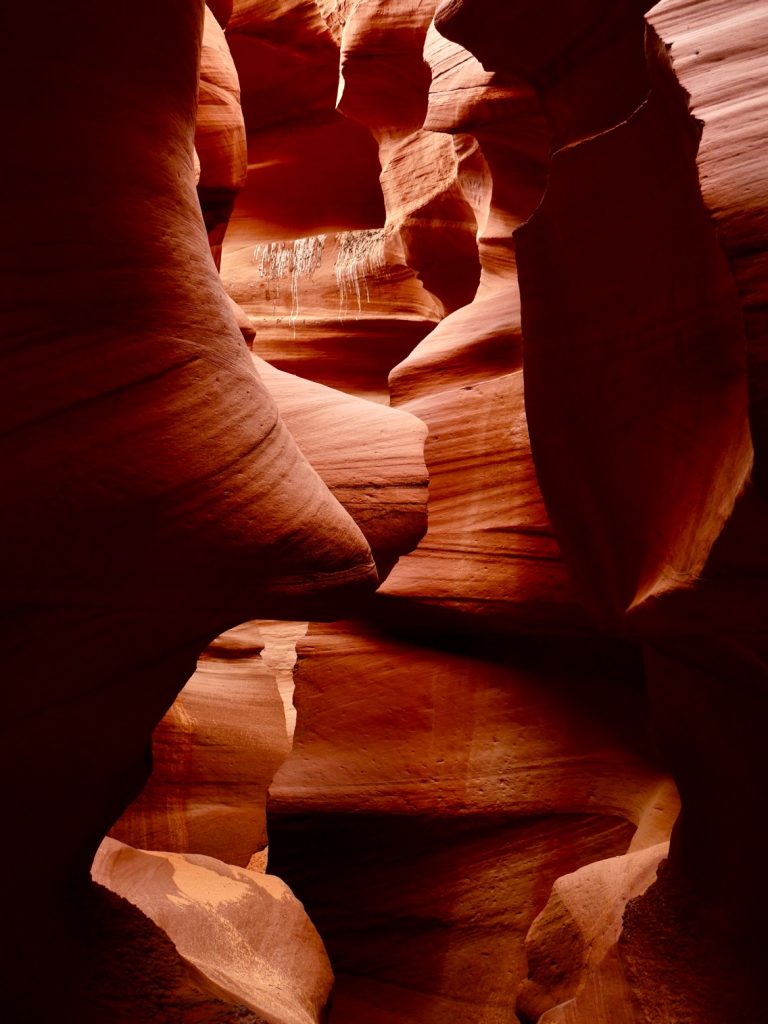
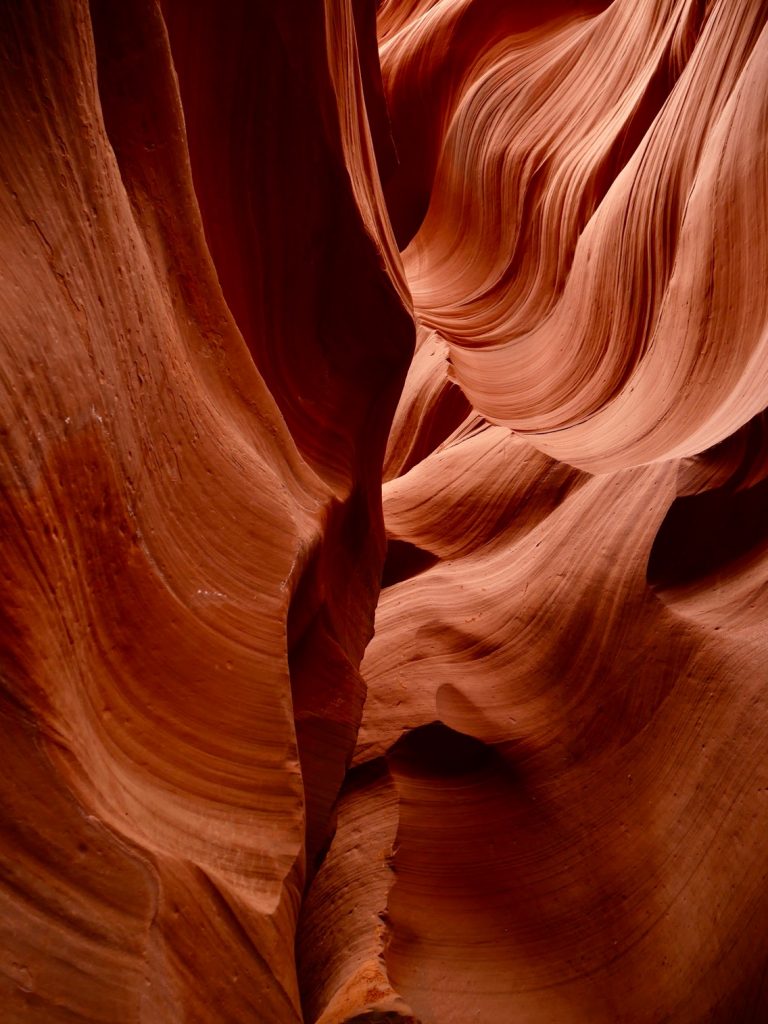


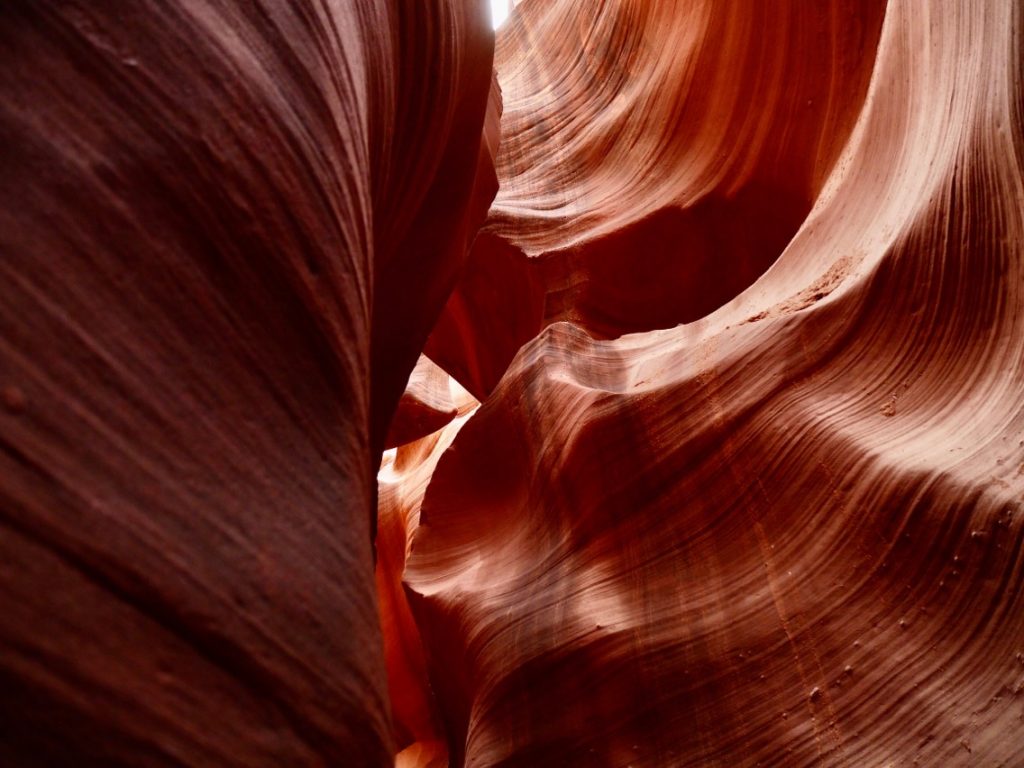



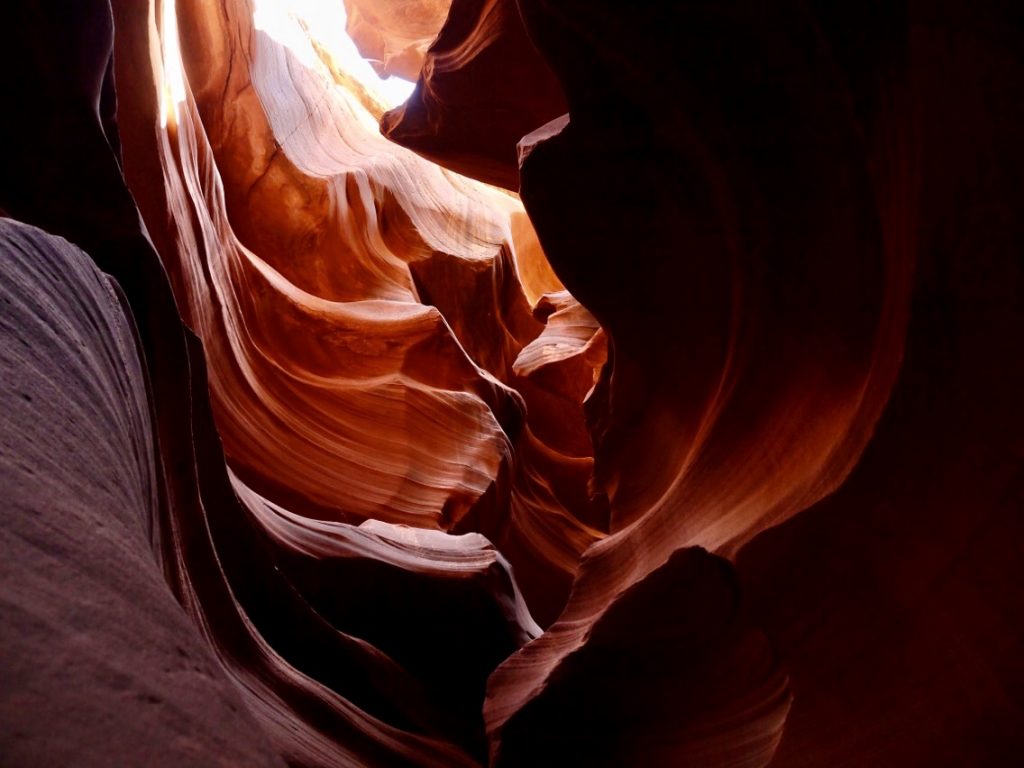
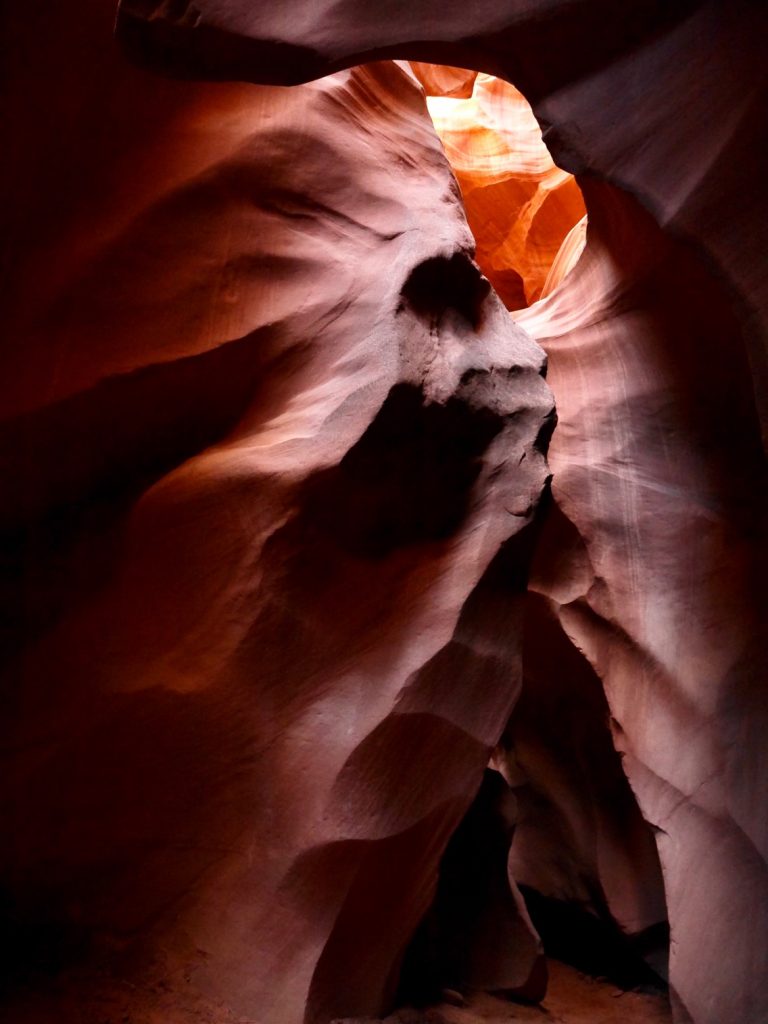



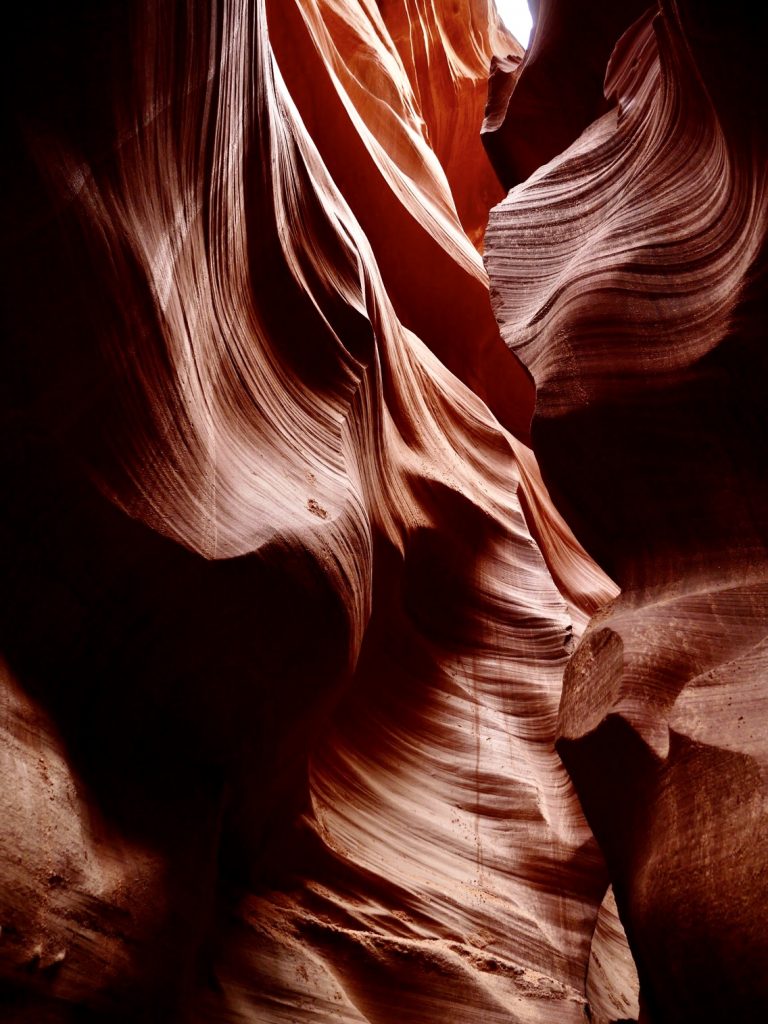
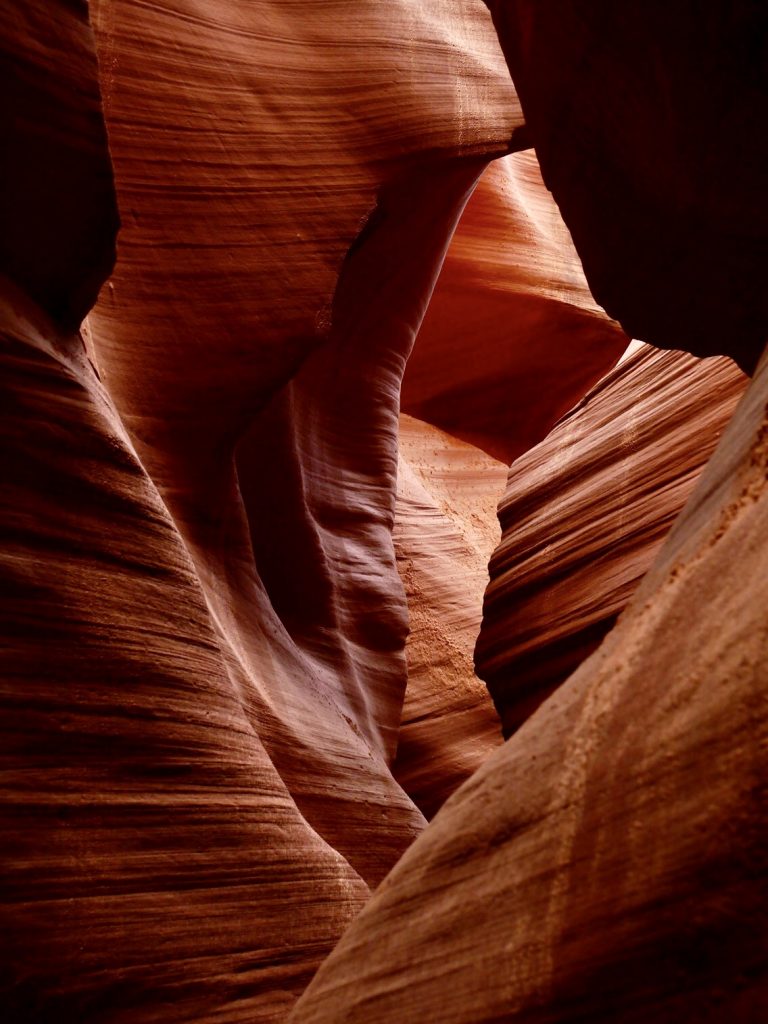


















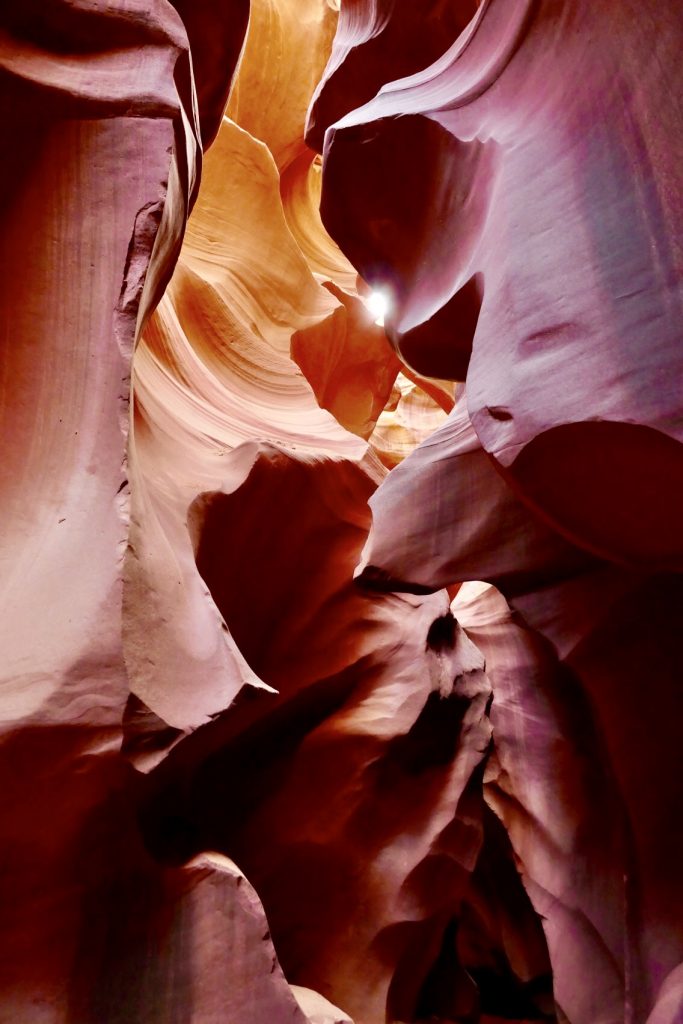




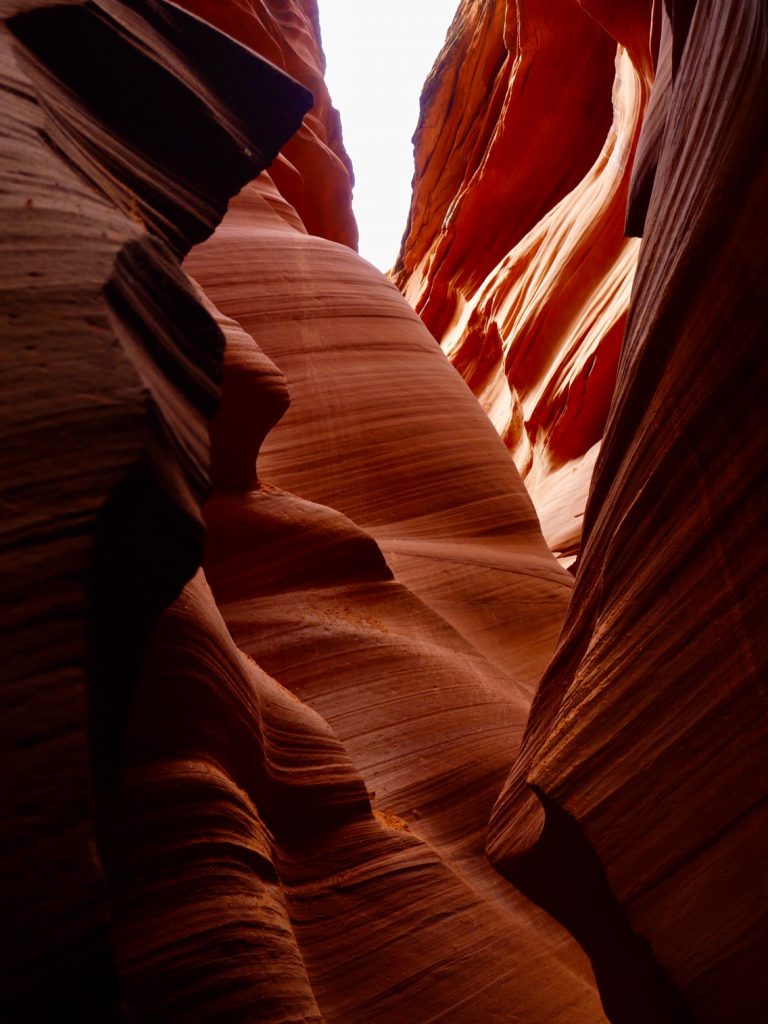
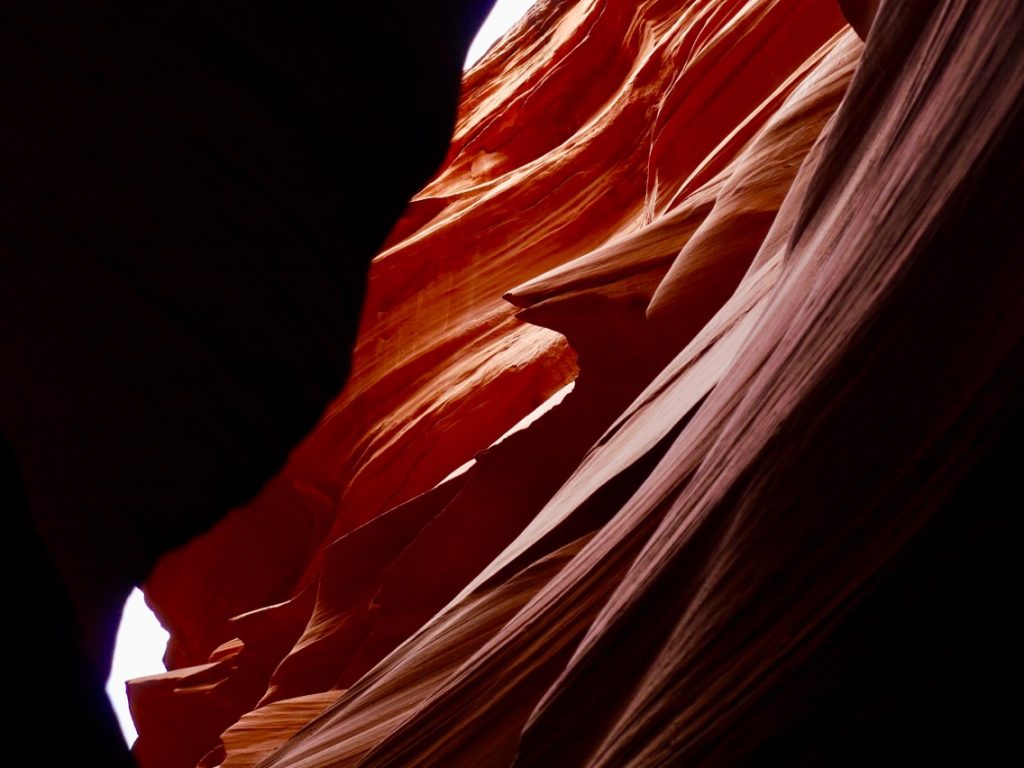

Lower Antelope Canyon, Page, Arizona
Lower Antelope Canyon is located just on the other side of route 98 from Upper Antelope Canyon.
The various Navajo tour companies have rights to guide tourists into different canyons based on their land ownership and who owns the grazing rights.
While some of these canyons look similar, the experience of touring them can be very different.
The “Slot canyons” are more dramatic and beautiful, in my opinion.
There are slot canyons that are formed by a mighty river which runs through them, the most famous of them all being the Grand Canyon, which the Mighty Colorado River runs through.
A Slot Canyon is a long, narrow and tall channel, full of twists and turns, created by a drainageway of rainwater.
It has sheer rock walls that are continuously in a state of erosion.
Many slot canyons are composed of sandstone and limestone rock, although slot canyons of other rock types such as granite and basalt are also possible.
While visiting Lower Antelope Canyon, we signed up for the deluxe tour.
We did not know what to expect, except that we got to wait in a fancy VIP room with leather chairs, got unlimited water bottles and tea, and that we were going to tour the canyon alone.
Groups tend to enter the canyon one after another, in order not to have too many people walking in the narrow pathways at the same time.
We were promised a time in which we would walk alone, and so be able to take photos without needing to crop people out of our camera’s picture frame.
Justin, our Navajo guide, told us that he used to play with his friends in these canyons, when he was a child.
Nowadays kids do not do that.
The canyons have been replaced by video games on smart phones as sources of entertainment.
There are steep ladders totaling six flights of steps, taking people down to the canyon’s floor.
Justin said that as kids, they chose the less steep part of the canyon to enter, and instead of sturdy fixed steel steps, they used to tie their jackets together and lower one another into the canyon.
Later, the Navajo tribe put in wooden ladders, and started guiding people who wanted photography tours.
At first, those photographers with their huge wooden cameras and massive wooden tripods, were the only visitors to the canyons.
Later the wooden ladders were replaced with regular hardware shop ladders and then finally replaced with these permanent metal stairs.
When on the canyon’s floor, we were in awe again of this masterpiece of nature, carving this beauty in the middle of what looks like simple grazing land, with dinosaur footprints on fossilized sand.
From a distance, you can see absolutely nothing, but as you step down into the earth, you are surrounded by these stunning hundred foot tall walls of unparalleled beauty.
Justin told us that as a kid, he was once caught up inside the canyon when a flash flood filled the canyon.
He said that it wasn’t even pouring rain, just a drizzle, but that within ten minutes, he was in three feet of water.
Jules asked if he were scared.
Justin smiled and said he was scared only the first time.
The other times he knew what to expect and had learned how to deal with it.
“But better to be out of the canyons if you can,” he said.
As a kid, his house was located on this plateau, so he never really was out of danger of flash flooding.
After we finish walking through the canyon, we climbed up the other side of the canyon on the lower end, only about forty feet up, and emerged at ground level.
Justin took us to see Ken’s photography gallery in the main house, and gave us a gift of a Navajo “Dream Catcher” made of turquoise colored leather and feathers.
The belief is that the “Dream Catcher,“ which looks like a spider’s web and which you should hang in your bedroom, will attract dreams to its webs as they float by.
It is known that the night air is filled with good and bad dreams, which can haunt your sleep.
The Dream Catcher can become an object of power, to give you a good night’s sleep, free of nightmares.
The photos of this canyon are by Jules Landsman.
With love and light,
Tali